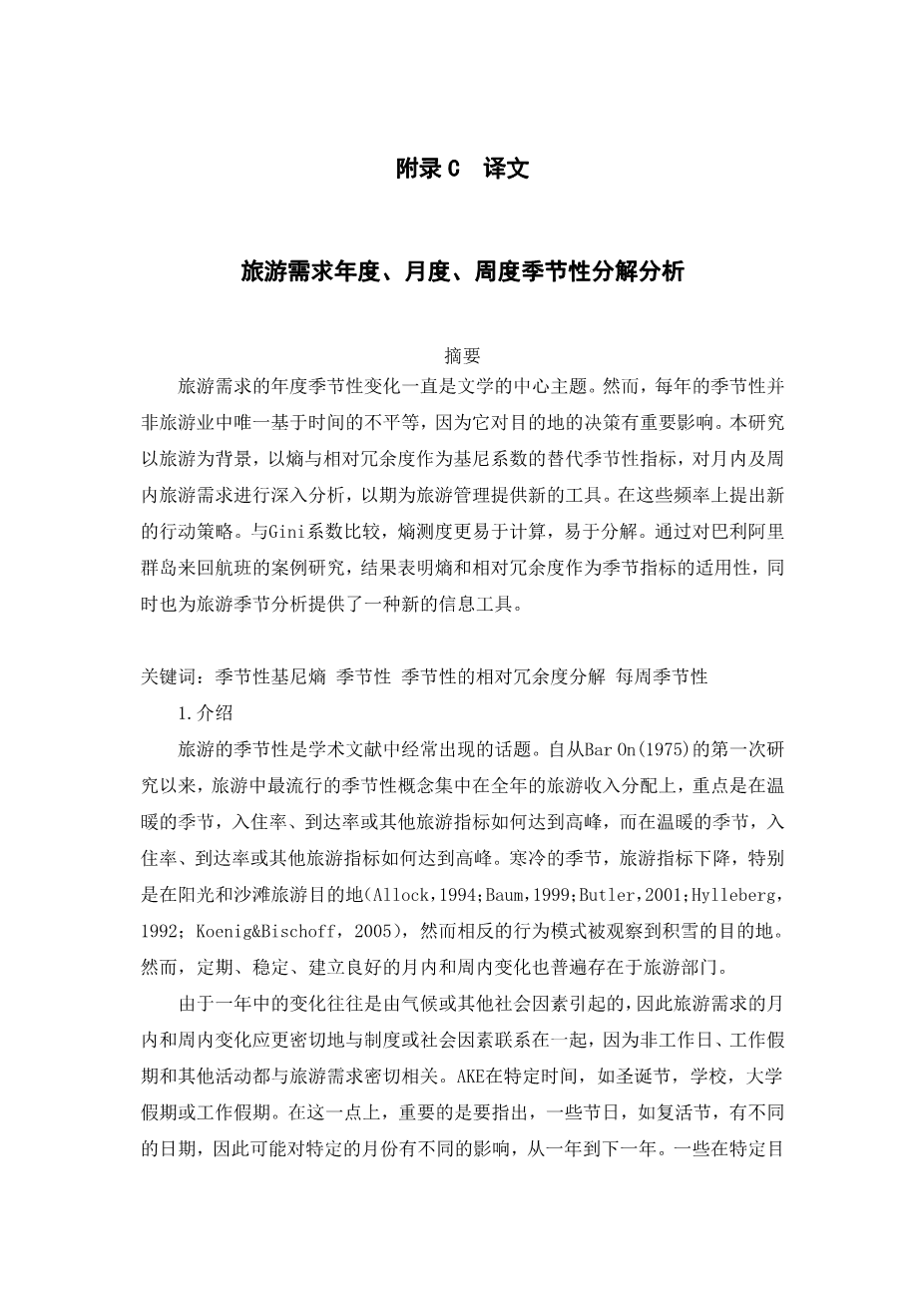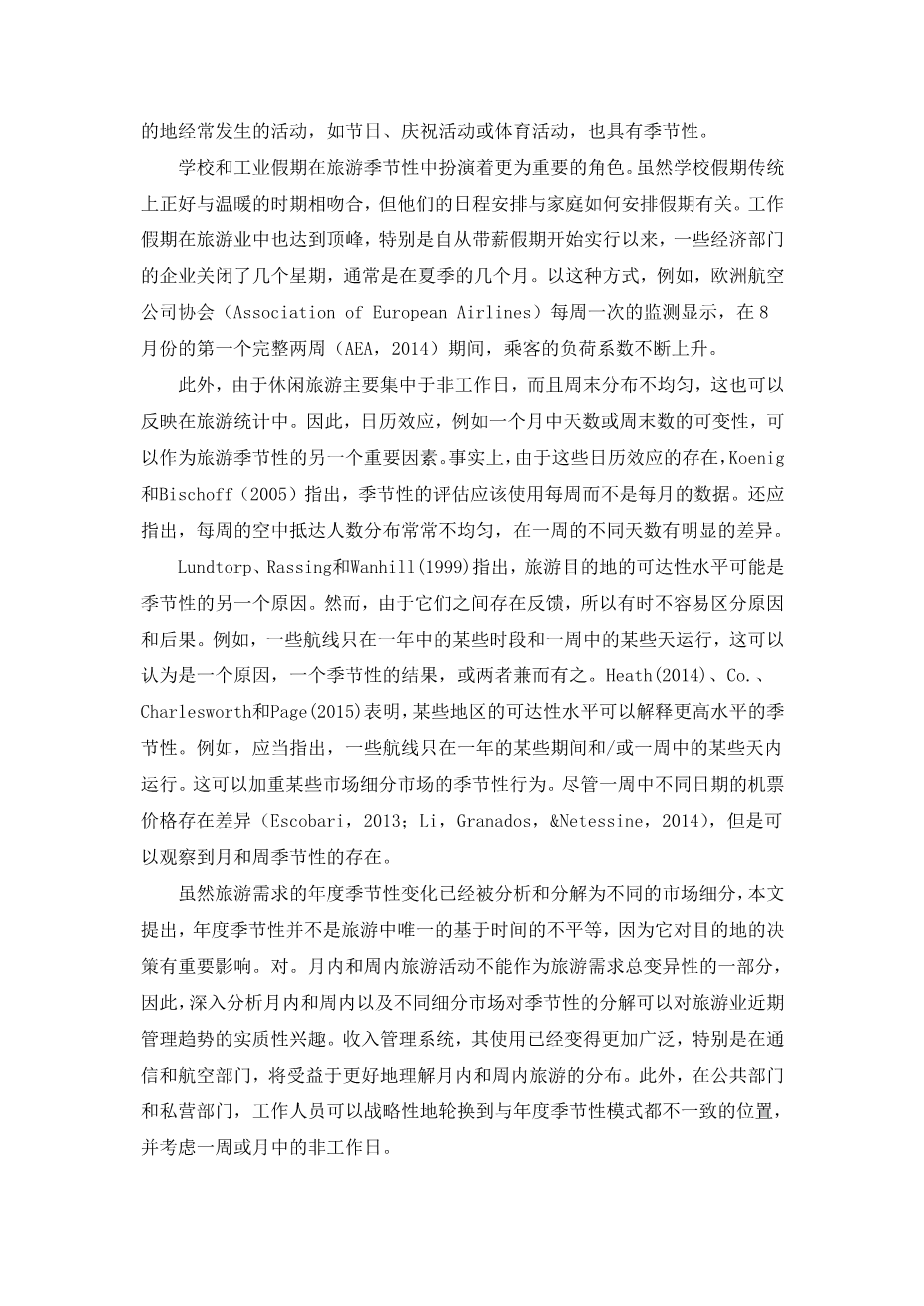Yearly, monthly and weekly seasonality of tourism demand: A decomposition analysis
A b s t r a c t
Annual seasonal variations in tourism demand have been a central theme in literature. However, annual seasonality is not the only time-based inequality in tourism flows that has important implications on policy-making decisions at destinations. Within the context of tourism, this study aims to make an in- depth analysis of intra-monthly and intra-weekly tourism demand using the entropy and relative redundancy measures as alternative seasonality indicators to the Gini coefficient in order to provide new tools to manage tourism and propose new action policies at these frequencies. In comparison with the Gini coefficient, the entropy measure is simpler to compute and it is easily decomposable. Using the case study of air arrivals and departures to and from the Balearic Islands, results show the appropriateness of entropy and relative redundancy as seasonal indicators but also as a new information tools for tourism seasonality analysis.
Keywords: Seasonality Gini Entropy Relative redundancy Decomposition of seasonality Monthly seasonality Weekly seasonality
1.Introduction
Seasonality in tourism is a recurrent topic in academic literature. Since the first study by Bar On (1975), the most popular definitions of seasonality in tourism have centred on the distribution of tourism flows across the year, focusing on how, during warmer seasons, occupancy rates, arrivals, or other tourism indicators peak, while, during the colder seasons, tourism indicators fall, especially at sun and sand tourist destinations (Allock, 1994; Baum, 1999; Butler, 2001; Hylleberg, 1992; Koenig amp; Bischoff, 2005), whereasopposite behaviour patterns are observed for snowy destinations. Nevertheless, regular, stable, well-established intra-monthly and intra-weekly variations are also commonly present in the tourist sector.
Since variations during the year are often caused by the climate or other social factors, intra-monthly and intra-weekly changes in tourism demand should be more closely associated with institu- tional or social factors, due to non-working days during the week, work holidays and other events that take place at specific times, such as Christmas, school or university holidays or work vacations. In this context, it is important to point out that some holidays, like Easter, have variable dates and may therefore have differing effects on certain months from one year to the next. Some regular, recur- rent events at specific destinations, like festivals, celebrations or sport events, also influence seasonality patterns.
School and industrial holidays play a more relevant role in seasonality in tourism. Although school holidays have traditionally coincided with warmer periods, their scheduling influences how families plan their holidays. Work vacations also influence peaks in tourism, especially since the introduction of paid holidays and the closure of businesses from some economic sectors for a few weeks, often during the summer months. In this way, for instance, weekly monitoring by the Association of European Airlines recurrently shows a higher passenger load factor during the first two complete weeks of August (AEA, 2014).
Furthermore, because leisure tourism is mostly concentrated on non-working days and weekends are not equally distributed across months, this can also influence tourism statistics. Consequently calendar effects, such as the variability of the number of days or weekends in a month, can be presented as another important influential factor in seasonality in tourism. In fact, due to the presence of these calendar effects, Koenig and Bischoff (2005) point out that seasonality should be evaluated using weekly rather than monthly data. It should also be noted that the weekly distribution of air arrivals is often not a uniform one, with observable differ- ences in the different days of the week.
Lundtorp, Rassing, and Wanhill (1999) point out that a tourist destination's level of accessibility can be an additional cause of seasonality. However, it is not sometimes easy to differentiate be- tween causes and consequences since there is a feedback between them. For instance, that some air routes only operate during certain periods of the year and on certain days of the week, it can be considered a cause, a consequence of seasonality or both. Heath (2014) and Coshall, Charlesworth, and Page (2015) show that certain regions' level of accessibility can account for higher levels of seasonality. It should be noted, for instance, that some air routes only operate during certain periods of the year and/or on certain days of the week. This can accentuate the seasonal behaviour of some specific market segments. The presence of monthly and weekly seasonality can be observed though the price differences in airfares on different days of the week (Escobari, 2013; Li, Granados, amp; Netessine, 2014).
Although annual seasonal variations in tourism demand have been analysed and decomposed for different market segmenta- tions, this paper proposes that annual seasonality is not the only time-based inequality in tourism flows that has important impli- cations on policy-making decisions at destinations. Significant Intra-monthly and intra-weekly tourism activity fluctuations can be part of the total variability of tourism demand and consequently, an in-depth analysis of the decomposition of seasonality at an intra-monthly and intra-weekly level and by different market segments can be of substantial interest in view of recent manage- ment trends in the tourist sector. Revenue management systems, whose use has become more widespread, especially in the ac- commodation and airline sectors, would benefit from a better un- derstanding of the distribution of intra-monthly and intra-weekly tourism. Additionally, in both the public and private sectors, staff could be
剩余内容已隐藏,支付完成后下载完整资料


英语译文共 12 页,剩余内容已隐藏,支付完成后下载完整资料
资料编号:[434441],资料为PDF文档或Word文档,PDF文档可免费转换为Word
您可能感兴趣的文章
- COVID-19时期的旅游业和可持续发展:以西班牙为例外文翻译资料
- 农民相对剥夺感对乡村旅游可持续发展的影响机制外文翻译资料
- 校园大学生的旅行行为——以亚洲某乡村大学为例外文翻译资料
- 内容旅游与地方社区响应:鹫宫的“幸运之星”和“协作动漫旅游”外文翻译资料
- 基于符号互动理论的遗产旅游资源开发与重塑——以良渚古城遗址为例外文翻译资料
- 在TikTok上映射互联网名人:探索注意力、经济和可见性劳动力外文翻译资料
- 基于社区游客视角的环境责任行为的概念和度量外文翻译资料
- 温泉小镇的再造:维希的独特案例——副标题外文翻译资料
- 基于IP理念的桐乡丰子恺文化旅游开发研究外文翻译资料
- 特殊事件对旅游业的影响及其应对措施研究——新冠肺炎疫情对全球旅游业的影响及其应对措施外文翻译资料


